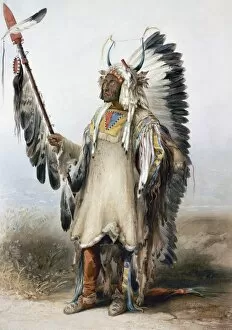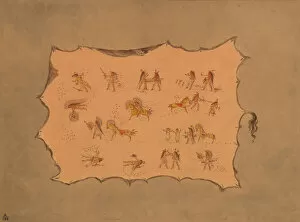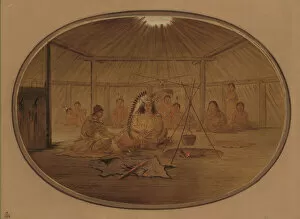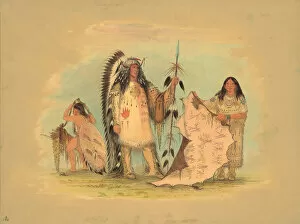Mah To Toh Pa Collection
Mah-to-toh-pa, also known as Four Bears, was a prominent Mandan chief during the early 19th century
For sale as Licensed Images
Choose your image, Select your licence and Download the media
Mah-to-toh-pa, also known as Four Bears, was a prominent Mandan chief during the early 19th century. His leadership and influence extended beyond his tribe, making him a significant figure in the complex web of relationships between Native American communities and European explorers. Bodmer's watercolor painting from 1832-34 captures Mah-to-toh-pa's regal presence, adorned in traditional attire. The intricate design on his robe, as depicted in a facsimile from 1861/1869, highlights the artistic skill and cultural significance of the Mandan people. George Catlin's portraits from the late 1800s provide a glimpse into Mah-to-toh-pa's personal life, showing him with his favorite wife and in the act of painting his own portrait. These depictions offer a more intimate look at the man behind the title of chief. Mah-to-toh-pa's exploits were also immortalized in various works of art, such as Myers and Co's 1841 lithograph and Harris' 1848 painting. These visual records serve as testament to the enduring legacy of this Native American warrior and leader. Despite the passage of time and the many changes that came with European contact, Mah-to-toh-pa's story continues to resonate, reminding us of the rich history and complexities of the Native American experience.









